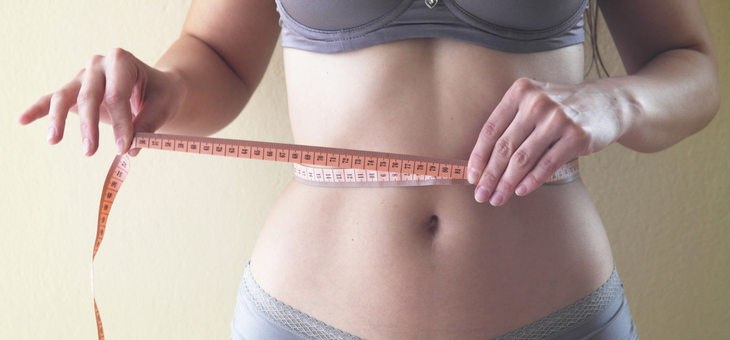In Australia, 67 per cent of adults are overweight or obese. The percentage of overweight people increases in older age brackets. As you get older your metabolism, body composition and hormones change, meaning that losing weight after 40 can be an uphill battle.
Having more muscle mass raises your metabolism, meaning you burn more calories. As you age you begin to lose muscle mass, making it harder to maintain a stable weight. Hormonal changes associated with menopause can also make it more difficult to lose weight.
For many people, making healthy eating choices and active lifestyle changes is enough to help them find and maintain a stable weight. Some diets that have been associated with healthy weight loss include the 5:2 fasting diet, a diet rich in superfoods, and the yo-yo diet. If you are struggling to find a healthy diet that works for you, consult your doctor or dietician.
However, it can be hard to lose weight with lifestyle changes alone. This is especially true for obese Australians.
CHOICE has researched the most effective medical weight loss treatments to support healthy lifestyle changes. They concluded that there are two main options including medication and very low energy diet or meal replacement programs.
Very low energy diet (VLED)
Popular VLED brands include Optifast, KicStart, Tony Ferguson and Optislim. These diets contain very little energy and are comprised of meal replacements including snack bars, soups and shakes. These products are low in carbohydrate, putting your body into a state of mild ketosis, where it burns fat for energy. A VLED diet can include up to 3350kj of energy, or 800 calories a day, and lasts for between eight and 16 weeks. Weight loss results are usually around 1.5–2.5kg a week.
While these products largely claim to contain all your nutritional needs, they are unregulated in Australia, making it difficult to know. According to CHOICE, a 2016 study of eight VLED diets found that none met the daily nutritional requirements. Protein, which is essential in retaining muscle during weight loss, was found to be particularly low in these products.
Side-effects of VLEDs include dry skin, sensitivity to the cold, low blood pressure, fatigue, dizziness, diarrhoea, muscle cramps, constipation, menstrual disturbances, irritability, gallstones and temporary rashes and hair loss. These don’t come cheap either. Although you’re saving money on buying food, these meal substitutes can cost around $7.50 to $10.50 a day, though there are more expensive options.
Medication
In Australia, no weight loss medications are government-subsidised on the PBS. The only medicines approved for weight loss in Australia are Duromine (phentermine), Contrave (naltrexone/bupropion), Saxenda (liguratide) and Xenical (orlistat).
These medications are generally associated with a weight loss of 3–5kg, and may also improve blood pressure, cholesterol levels and blood glucose. Your doctor may prescribe you weight loss medication if you have a condition such as type 2 diabetes, pre-diabetes, sleep apnoea, high cholesterol or high blood pressure and have a BMI of 27–30. Otherwise, your doctor can prescribe these for people with a BMI over 30.
How they work
Duromine
This amphetamine-like drug suppresses appetite and costs between $100 to $140 a month. Side-effects include heart palpitations, insomnia, anxiety, increased blood pressure and rapid heart rate.
Contrave
This appetite suppressant can help you to lose around 5 per cent of your body weight in 16 weeks. Taking the full dose will cost your around $240 a month. Side-effects include insomnia, dizziness, vomiting, nausea, headache, dry mouth, constipation, diarrhoea and changes in the way you taste food.
Saxenda is self-injected daily. It works by suppressing appetite and has been linked to weight loss of around 5–6kg. However, this medication costs around $400 a month and side-effects include vomiting, nausea, diarrhoea and constipation. Other, more serious, side-effects include hypoglycaemia, gallbladder disease, pancreatitis, suicidal thoughts and renal failure.
Xenical stops your body from absorbing up to 30 per cent of the fat you consume. It works best alongside an exercise routine and reduced-fat diet. It costs around $100 a month. Side effects include reduced vitamin absorption, headache, flatulence, seepage, diarrhoea, faecal incontinence and abdominal pain. You can eat no more than 40g of fat a day while on this medication.
It’s important to remember that medications are safer and more effective when taken alongside a healthy diet and regular exercise. For more information, or to find out if these medications are right for you, consult your doctor.
Do you think that weight loss medications should be subsidised by the government? Would you consider a VLED diet or taking prescribed medications to help with weight loss?
If you enjoy our content, don’t keep it to yourself. Share our free eNews with your friends and encourage them to sign up.
Related articles:
https://www.yourlifechoices.com.au/health/wellbeing/best-drinks-for-weight-loss
https://www.yourlifechoices.com.au/health/wellbeing/why-half-of-diet-attempts-fail
https://www.yourlifechoices.com.au/health/wellbeing/seven-foods-dieticians-wont-touch
Disclaimer: This article contains general information about health issues and is not advice. For health advice, consult your medical practitioner.

